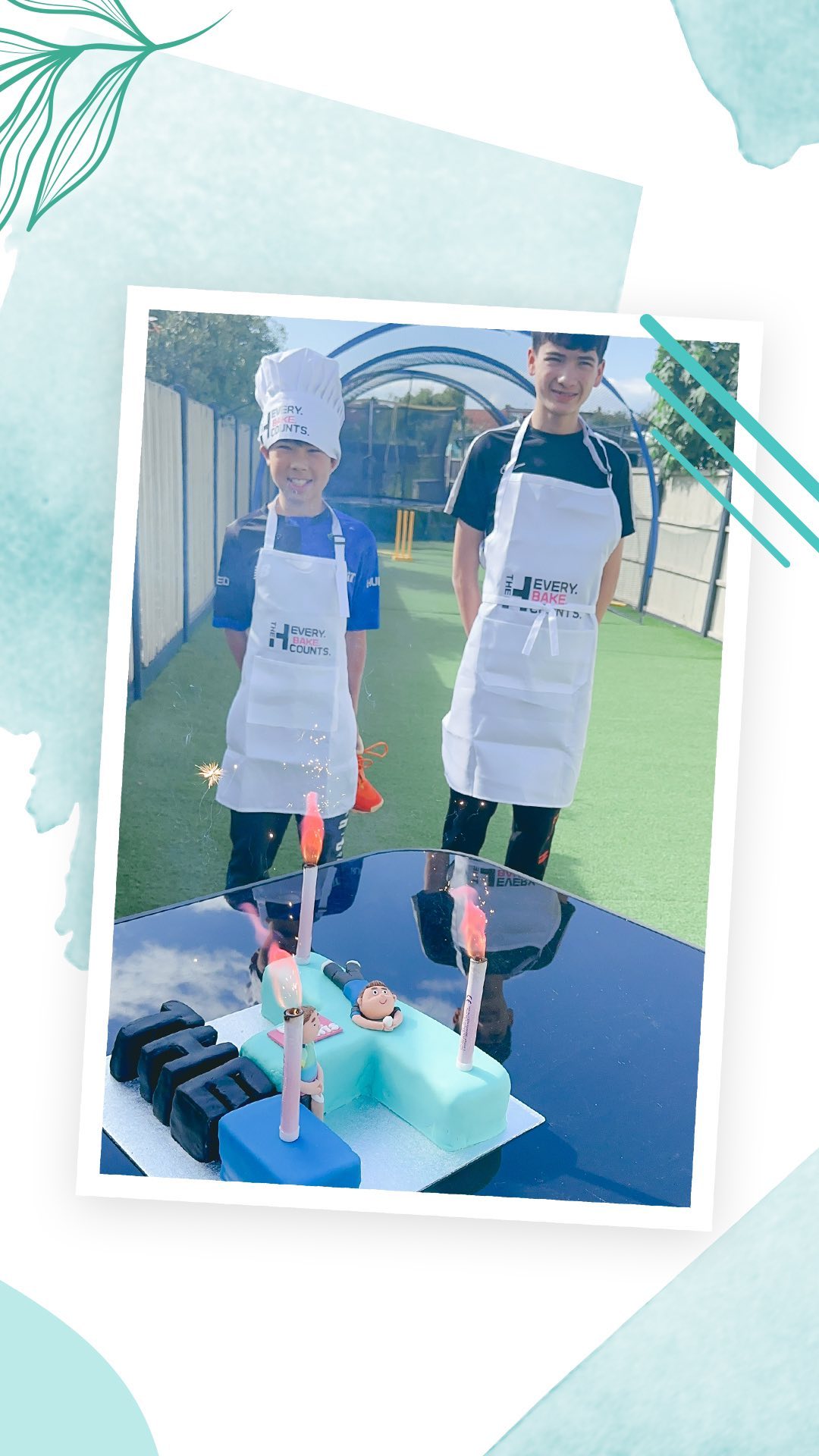A step-by-step guide to learn how to swaddle a baby the right way
Swaddling is a typical technique in which a newborn is gently wrapped in a light, permeable blanket to aid relaxation and sleep. Swaddling your infant is supposed to make them feel safe and secure, similar to how they felt in the womb. So let’s learn a step-by-step technique on how to properly swaddle your baby.

The right blanket
It’s crucial to pick the right swaddling blanket. Fabric that is soft, breathable, and not too stiff is ideal. A cotton muslin swaddling blanket is recommended. Swaddling with a muslin blanket is ideal since it is a highly breathable fabric that prevents overheating while also giving greater stretch, allowing your baby to move about more freely.
Wrap them gently
Using lightweight, breathable fabrics, swaddle your infant. Cotton baby blankets, cotton muslin wraps, and cotton-winged swaddles are all good options. Swaddle your infant only up to their shoulders; the neck and head should not be swaddled. You can also check this URL to find more useful information on how to swaddle your baby the right way. Wrap your infant tightly yet gently under a blanket. It’s not a good idea to swaddle your infant so tightly that his or her hips and knees can’t move around freely. Swaddling your newborn too tightly can result in hip dysplasia, which is a condition in which the hip does not form properly. Reduce the risk of hip dysplasia by using hip-friendly swaddling techniques. Make sure your baby can kick freely with their hips and knees. Your baby’s legs should be able to naturally fall into place.
Step by step
- Take the blanket out and fold one corner of the wrap back to form a triangle. Place your infant in the middle, with the shoulders just below the folded corner.
- Put your baby’s right arm, slightly bent, alongside the body. Pull the same side of the wrap around your baby’s chest, keeping the right arm hidden behind the cloth. Leave the left arm free by tucking the swaddle’s edge under the torso.
- Tuck the fabric into the top of the wrap by your baby’s shoulder after folding the bottom corner of the blanket up and over their foot.
- Place the baby’s right arm beside the body, slightly bent. Pull the same side of the wrap over your baby’s chest while hiding the right arm beneath the fabric.

When to stop?
Swaddling your baby should be done just when he or she is still a newborn. As soon as they show signs of learning to roll over or can already do it, you should remove them from swaddling. If they turn over onto their side or front, they can adjust their head position using their hands and arms. Your infant may begin to turn over as early as two to three months old.
Benefits
Swaddling has a number of advantages, including:
- Assisting in keeping your baby warm as it sleeps
- Limiting the startle response, which might cause your kid to wake up in the middle of the night
- By simulating the cozy atmosphere of the womb, you may give your baby a sense of protection and security.
- Providing comfort to your infant through a potentially distressing event, such as a vaccine.
SIDS prevention
It’s uncertain how swaddling affects sudden infant death syndrome (SIDS). SIDS-related mortality has been on the decline in recent decades. This is assumed to be due to explicit guidelines stating that newborns should sleep on their backs rather than their fronts or sides.
Babies that are swaddled are less likely to turn from their backs to their stomachs, perhaps protecting them against SIDS. If a baby can roll over, however, they may be in danger of SIDS if they are swaddled. This is because avoiding suffocation necessitates head raising and rotation, which is hampered when a baby’s arms are confined by its sides when swaddled.
When to swaddle
You can swaddle your infant for nighttime sleep, a nap, or when it has colic and needs to be soothed. Swaddling your infant helps keep him or her warm, peaceful, and safe. Swaddling can also encourage better sleep at bedtime or during naps.
Safety considerations
Swaddling may make it more difficult for your baby to wake up since it reduces its natural capacity to arouse itself from sleep. If you swaddle your infant too tightly, it may develop hip issues. You’ve swaddled your baby correctly if you can put two to three fingers between his or her chest and the swaddle. Make sure your baby isn’t overheated when it’s swaddled. Your baby is probably overdressed if it is sweating, has moist hair, flushed cheeks, has heat rash, or has quick breathing.
Swaddling your infant has some advantages, like calming your baby and maybe promoting better sleep. If you decide to swaddle your baby, you can quickly learn how to do it by following this step-by-step guide or asking a nurse or your baby’s healthcare practitioner to demonstrate how to do it. You’ll be a pro at wrapping your kid and making it feel safe and comfortable.
![[AD] We’re a cricket-mad family, so we’re buzzing that @thehundred is back this August! 🏏🔥
To get ready, M tried out the official FREE Activity Pack — and it’s brilliant! 🙌
Packed with fun games, creative challenges and sporty tasks, it’s perfect for getting kids hyped whether you’re at home or on the go.
👉Download yours now (link in bio)
@londonspirit @ovalinvincibles #EveryMomentCounts #TheHundred
#EnglandCricket #CricketFamily #TheHundredCricket #LondonBloggers #Cricket #CricketIsLife #kidsfun](https://suburban-mum.com/wp-content/uploads/2022/11/505472555_18531279601016840_7092520074819907569_n-180x320.jpg)



![[AD - Press visit]
We enjoyed the glorious sunshine this weekend with a trip to Brighton. We went on the @brightoni360official which is right by the sea front.
The i360 pod take a slow journey up, allowing you to take in views across Brighton and the South Downs 450ft above ground. There’s a bar inside with drinks and snacks available to purchase and the experience lasts 25 minutes.
Afterwards, we headed to the open air roller rink for a roller skating session!
The roller rink is:
⭐ Suitable for over 5s
⭐ £6.50 if you have your own skates or £9.50 if you need to hire them
⭐ 45 minutes per session
Full details to visit the i360 + skating
📍 Brighton i360, Lower Kings Road, Brighton BN1 2LN
🚗 Parking nearby (we parked in the Regency Square Car park)
🎟️ Prices start from £25.40 for an adult and £16.90 for a child
🕐 Opening hours are currently Sun-Fri 10.30am-18.30pm and until 19.30pm on Saturdays
☕️ Bar inside the i360, cafe and gift shop
Book tickets here:
https://tickets.brightoni360.co.uk/tickets/?_ga=2.195305772.1869001490.1689671753-1757164059.1689671753/#events?eventid=157](https://suburban-mum.com/wp-content/uploads/2015/04/417980235_313576471048632_3682382982231216432_n.jpg)

![[AD] ***Summer of fun at Barracudas Activity Camps!****
There is plenty for kids to do at @barracudas_activity_day_camps
From Tennis, Archery, Swimming, Motor Sports and more you can be sure that there will be something for kids aged 4.5-14. ⚽🏈🥅🎾🏓🏎️🏹🏊♂️🏉
You can book on a day by day basis - so it can fit in with any other days out/activities you have planned and there are early drop off and late pickup options available. Barracudas are also Ofsted registered so you can use your Childcare Vouchers too.
⭐⭐⭐Get £20 off a week or £4 off a day using my discount code: MARIA20⭐⭐⭐
#BarracudasActivityDayCamp #BarracudasActivityCamp #BarracudaAmbassadors #SummerHolidays #SchoolHolidays #Summer2023 #SummerCamp #DayCare #Camp #KidsCamp #surreymummy #surreymums #SummerOfFun #ActivityCamps #HolidayCamps #Childcare #SchoolHolidays #schoolholidaycamps](https://suburban-mum.com/wp-content/uploads/2024/07/353583570_625625966167953_545896259645102575_n.jpg)



![[AD] We have some super exciting news...we have been chosen to be Laser Quest Ambassadors, and the boys are over the moon!
We are really lucky that our local Laser Quest (@laserquestkingston) is just around the corner from us. It means we can pop in of a weekend or anytime during the school holidays, and with summer just around the corner, I know Laser Quest will be one of our go-to places for some family fun.
As well as games of Laser Quest, there are also VR experiences and arcade amusements too. To find out a bit more about how Laser Quest works, you can read my blog post: https://www.suburban-mum.com/laser-quest-kingston/ (clickable link in bio)
Don't forget to keep an eye out for our Laser Quest posts - I'm going to be giving away two family passes to use at Laserquest Kingston!
If you can't wait and want to head down to Laser Quest to try it out, use the code SUMMER30 for 30% off your booking. The code is valid from now until the end of August 2023 and can be used on Laser Quest games and birthday party bookings.
#LaserquestAmbassador #Laserquest #LaserquestKingston #ActivitiesForKids #FamilyFun #DaysOutWithKids #Lasertag #LaserquestVR #Kingston #ThingsToDoInKingston #SurreyFamilyDaysOut #ThingsToDoWithKids #RainyDayFun #SurreyMummy #SurreyLife #LifeWithKids #LifeWithBoys #familyfunday](https://suburban-mum.com/wp-content/uploads/2015/04/353230107_797358078406942_2405522556733455165_n.jpg)

![[AD] The sun has finally made an appearance and the boys have been making the most of it by spending it
in the garden.
They’re go-to is always football and they’ve been trying to improve their aim and accuracy with the new Messi Foldable Footlball goal from the #MessiTrainingSystem range.
I love the fact the goal is foldable, making it easy to store away when not in use. It is also lightweight so you can effortlessly pack it up and take it to the park or to a friend’s house.
The Messi Foldable Football Goal retails at £36 and can be purchased from @argos
You can read my full review here: https://www.suburban-mum.com/messi-foldable-football-goal/
#TrainLikeMessi #FoldableFootballGoal #FootballSkills #OutdoorFun #LionelMessi #LeoMessi #FootballAtHome #OutdoorKids #JustGetOutside #OutdoorsAndFree #ScreenFreeKids #WhateverTheWeatherKids @flair_gp](https://suburban-mum.com/wp-content/uploads/2015/04/341194882_615024710178056_41977149395989448_n.jpg)

![[AD] We are absolutely thrilled to announce that we are Barracuda Ambassadors again this year.
With Easter just around the corner, the boys were sent the @barracudas_activity_day_camps new camp kit in preparation for the school holidays.
There’s a wide range of activities for kids aged 4.5 - 14 including Tennis, Archery, Basketball, Arts & Crafts and more.
If you like the sound of Barracudas, find out more over on their website. You can also save £20 a week or £4 a day, using my discount code: MARIA20](https://suburban-mum.com/wp-content/uploads/2024/07/336812306_765234558514317_685553691647241974_n.jpg)


![[AD - Gifted]
Last weekend we were invited to try out @tsarettaspice’s new Bottomless Brunch menu and I can tell you it was thumbs up all round!
There’s a good choice tapas on offer from Punjabi fish fingers, Indo Chinese Chicken to Spiced Lamb Scotch Eggs and Manchurian Cauliflower (which was amazing!)
If you’re local to Twickenham and fancy giving them a try here’s are the details.
Tsaretta Spice Bottomless Brunch
⭐️£37.50 per head for bottomless Prosecco or cocktail of the day
⭐️£55 per head for bottomless Champagne
⭐️ Food included: 4 tapas selections and dessert or 2 tapas selections, a pav or naanwich and dessert
⭐️ Non-alcohol brunch is also available
Tsaretta Spice
55 Church Street
Twickenham
TW1 3NR
You can also read our full review over on the blog (link in bio)](https://suburban-mum.com/wp-content/uploads/2024/07/334565436_5960402314015030_663031098700829518_n.jpg)
![[AD] What does family look like for you?
I am fortunate to be surrounded by strong, powerful women in the form of my mum, sister and mother-in-law (along with many others). With Mother’s Day just around the corner, @BootsUK want to celebrate all the different mums and mother figures we are lucky enough to have in our lives. They have a huge range of Mother’s Day gifts to choose from so we can show them how much they mean to us. (swipe to take a look at some of my choices)
If you want to express love and appreciation for the mother figure(s) in your life, head to Boots.com to find the ideal gift. They have a whole host of gifts, so you can be sure to find something to suit all tastes. Celebrate the #LoveForAllMums this Mother’s Day with Boots.
](https://suburban-mum.com/wp-content/uploads/2015/04/334276459_136658625736352_6403224988403337253_n.jpg)





1 thought on “A step-by-step guide to learn how to swaddle a baby the right way”
Thanks for all the tips! I’ve recently started to following Susan Urban’s tips about sleep training newborns and the swaddling is one of the first thinks. I love the idea and Stan seems to be loving it too but I needed some tips on wrapping the thing properly. Fingers crossed please!